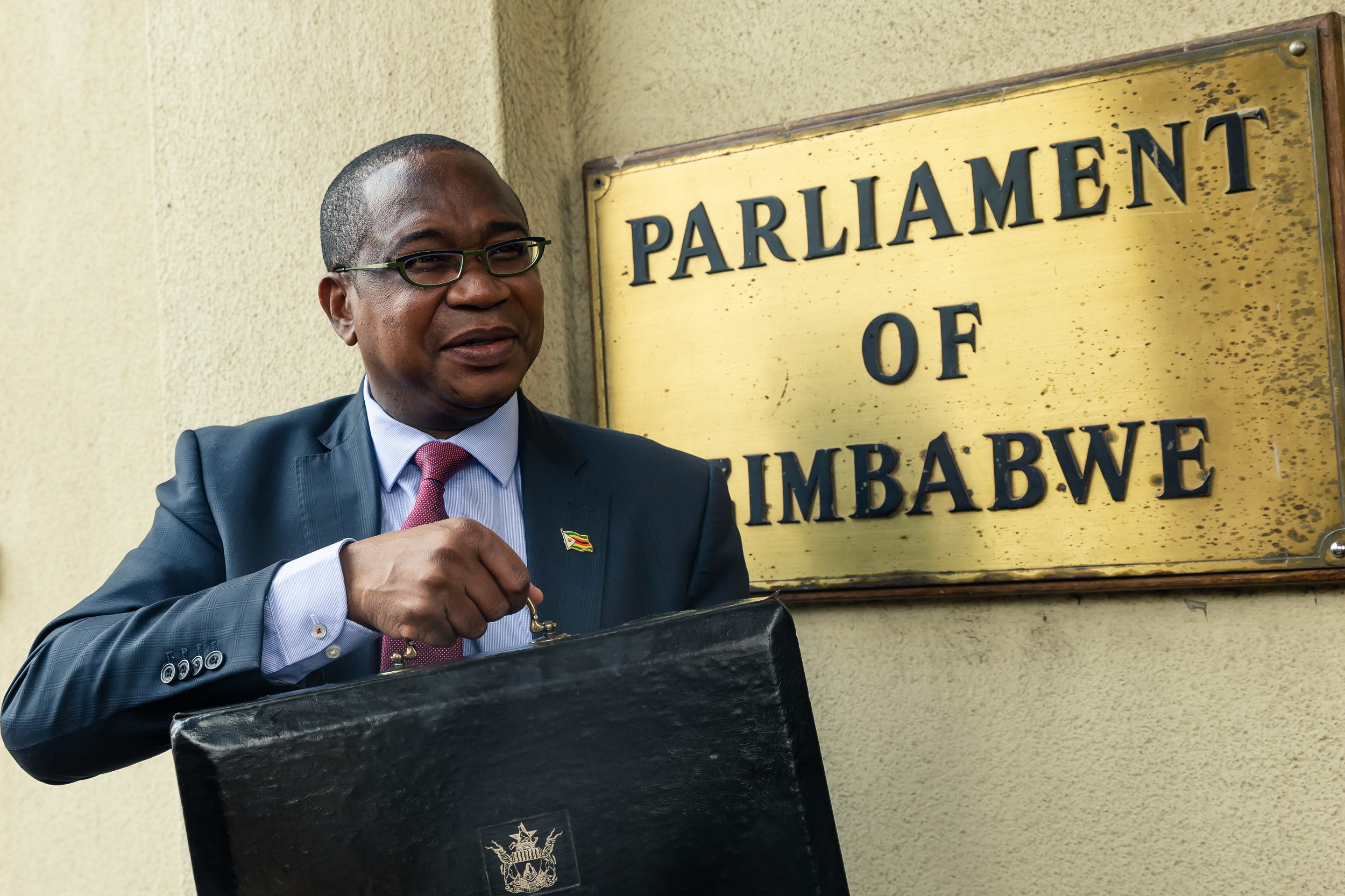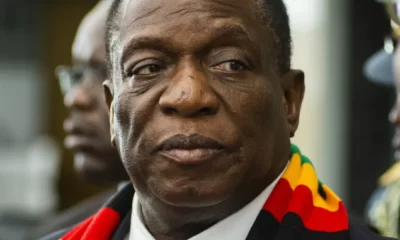
Brett Chulu
Brett Chulu
IN last week’s instalment, a concern was raised that the 2021 National Budget, Vision 2030
and the National Development Strategy risk being misaligned.
The Pre-Budget Strategy Paper released by Treasury sets out the pillars of the yet-to-be-published National Development Strategy One (NDS1)(2021-2025) on which the 2021 National Budget will be based. The logical connection (log frame) tying the series of forthcoming annual national budgets with the Transitional Stabilisation Programme (TSP) (October 2018 – December 2020), the NDS1, National
Development Strategy Two(NDS2)(2026-2030) and the Vision 2030 target is laid out impeccably by way of a graphic. In principle, the intention to align the 2021 National Budget with the NDS1 and with the ultimate goal of growing our national economy to an upper-middle-income group is present in Treasury’s thinking.
However, when you scrutinise the economic numbers and parameters spelt out in the Pre-Budget Strategy Paper, there are fundamental misalignments resident therein. This article, hopefully, will assist Treasury to re-adjust both the budget and the NDS1 before they are published.
Vision 2030 target poser
Page 5 of the Pre-Budget Strategy Paper states the upper-middle income economy target as
per capita Gross National Income (GNI) ranging between US$3 956 and US$12 235. This target band will be irrelevant in 2021. The World Bank has re-set the upper-middle income for 2021, the inaugural year of the NDS1, as per capita GNI (nominal) of US$4 046 – US$12 535.There is a 2% difference between the old and the new band.
GNI is a slightly different measure from the
commonly referenced Gross Domestic Product (GDP). GNI is the sum of GDP and net money received from abroad by Zimbabwean residents and locally-registered entities.
In Zimbabwe, our GNI, from historical records of the most recent past, is marginally lower than GDP. In the absence of published GNI measurements, an ideal GDP band will be a stretch target of about 5%, on average. It
seems the upper-middle income target is a moving one regularly revised by the World Bank. It becomes difficult to set a numerical target 10 years in advance. The upper-middle income band is significantly wide. It is a big challenge for strategy. Government will have to sit down and address this challenge. One way to address the conundrum would be to take the Sadc macro-economic convergence annual inflation target of 3% and compound the 2021 upper middle-income lower bound. This will give us a target of at least per capita GNI of US$5 279 in 2030. Better still, we use per capita GDP (nominal) of at least US$5 279 in 2030. This will give a good cushion so that we are not too close to the World Bank’s lower bound of an upper-middle income economy in 2030 (frankly, we do not know what the World
Bank will state as the upper-middle income range in 2030). It will be interesting to see
how our Treasury will tackle the moving target conundrum. We need to be sure which goal we are attacking before the match begins. If we do not address this challenge, we will have a strategy built on an intended end we are not pretty sure what it is.
Misaligned growth rates
Based on both the old upper-middle income target band spelt out in the Pre-Budget Strategy Paper and the new one issued by the World Bank, the real economic growth rates are too low to take us to the upper-middle income status. On page 33 of the Pre-Budget Strategy Paper, the growth projections for the economy of Zimbabwe are 7,4% in 2021; 5,5% in 2022 and 5,2%
in 2023. These three projections are concerning. The 5,5% and 5,2% for 2022 and 2023 respectively are in the order of the actual growth rate for 2018 (5,5%), achieved without the implementation of the TSP. We should not forget that 2019 dragged our economic growth to minus 6% (Treasury’s estimate) or minus 8,3% (IMF’s estimate). No one at this point in time knows exactly how our economy declined last year.
This year, our Treasury thinks our economy will shrink further by 4,5% while the Bretton Woods see our economy shrinking by 10,4%. If we take the Treasury’s lesser pessimistic view, our economy is expected to have shrunken by 10,7% over two years. The Bretton Woods, impliedly, see a 19,6% economic decline in two years.
If we take Treasury’s projected economic growth rates for 2023 and 2023 as the expected speeds of growth, and a low single-digit inflation regime, in 2030, applying the World Bank’s GDPgrowth estimates for 2019 and 2020 , we expect to have an economy with a nomimal GDP of US$38 billion. The Agriculture and Food Systems Transformation stratey implies a US$40 billion economy in 2025. The mismatch is concerning. Taking into account the current natural rate of growth of our population, in 2030 our per capita GDP will be about US$2 375.
If we take the more optimistic view of our Treasury, a per capita GDP of US$3 750 in 2030
is expected. This is 7,3% outside the current upper-middle income lower bound.
As argued before, the World Bank’s 2030 upper-middle income band will be much higher than the current (2021) band. Assuming our GNI will always tail our GDP, the economy growth rates projected in the Pre-Budget Strategy Paper, in 2030 we will be a way off by as much as 70% from the upper-middle income per capita GNI range.
As things stand, our prospective 2021 National Budget and NDS1 are not built for Vision 2030.
There is a window to correct this grave misalignment.
State-led economic growth
It was expected that the desire of private sector-led economic growth explicitly stated in
the soon-to-be-concluded TSP would be carried over into the NDS1 and beyond. Private sector-led growth is logical if we hope to spur economic growth and sustain the minimum required rates of real economic growth for attaining an upper-middle income target by 2030. The economic parameter that bares the intended growth strategy is the proportion of the contribution to economic growth coming from the private sector in terms of investment in capital assets.
As per Treasury’s assessment, the economy is seen growing 7,4% in 2021. The growth, on an
expenditure basis, will come from consumption (both households and government), gross fixed
capital formation and exports of goods/services. Of 7,4% envisaged growth for 2021, gross fixed capital formation is expected to account for 78,4%. Gross fixed
capital formation is expected to add 5,8% to our economic growth in 2021. Of that expected
gross fixed capital formation, the government is expected to add 5,1% growth to our economy in
2021.Put more forcefully, the government’s investment in infrastructure and other capital projects is expected to drive 70% of our expected economic growth in 2020. The private sector’s investment in capital expenditure is expected to add 0,7% to our 2021 economic growth. Put differently, private sector investment in productive assets is expected to drive 9,4% of our economic growth.
As far as 2021, the first year of the NDS1, is concerned, our economy is expected to be grown by government capital expenditure.
In 2022, our economy, as per Treasury’s figures, is expected to grow by 5,5%. Gross fixed capital formation is expected to grow the economy in 2021 by 6,7%, with government-led capital outlays, growing the economy by 6,1%, with a negative trade balance dragging the 6,7% growth by 1,9 percentage points. So
in practical terms, in 2022, our economic growth is expected to come entirely from government-driven capital programmes. In 2023, a similar pattern is expected, with government-led gross fixed capital formation expected to add 5,5% growth to the economy. With our overall economic
growth for 2023 projected at 5,2%, a drag of minus 1,8 percentage points on economic growth from an expected trade deficit will, like in the previous year (2022), mean government-led capital outlays will be overwhelmingly driving economic growth.
Clearly, the private sector is expected to take a back seat in terms of driving economic
growth. This shows Treasury is not expecting meaningful external financial support to flow in to support private-sector investment in productive assets, at least up to 2023. It is not
possible for government-powered economic growth to chalk up economic growth rates that
can take us to Vision 2030. The real picture is clear: no shape-shifting changes in manufacturing are expected up to 2023. Exports are expected to play a very minimal role in growing the economy.
This leads us to a pertinent question: how will the state find funds to keep rolling out capital projects to sustain expected economic growth? There is a significant risk to economic growth projections, given in the Pre-Budget Strategy Paper. Any averments from planned government capital expenditures by way of financial constraints,
delays in progress and natural disasters will have an outsized impact in scaling down economic growth.
Key economic numbers borne in the Pre-Budget Strategy Paper show that we are under-capacitated to fulfil Vision 2030; our intended National Development Strategy is out of kilter with Vision 2030 and so, too, is our intended 2021 National Budget.






















